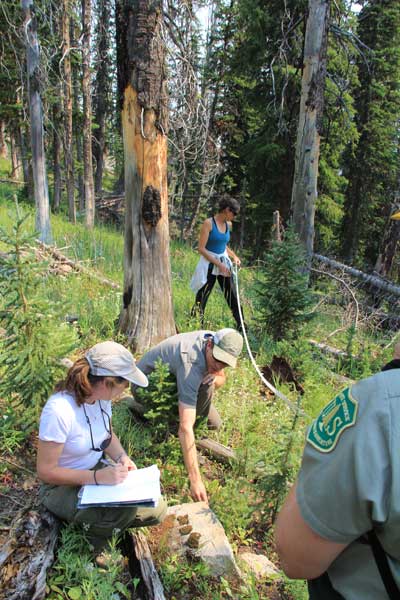By Michelle Werts
This week, the National Oceanic and Atmospheric Administration (NOAA) announced that 2012 was the warmest and second most extreme weather year on record for the lower 48 states. The agency reports that the average temperature in 2012 was 55.3 degrees Fahrenheit, which is 3.3 degrees above the 20th century yearly average and 1.0 degrees above the previous record holder for warmest year. Now, one and three degrees may not sound like a big deal, but in reality, that kind of rise is huge in climate terms.

As the heat continues to rise, healthy forests become more important than ever.
Greenhouse gas emissions are a major contributing factor to climate change. In its latest inventory of greenhouse gases in the U.S., the Environmental Protection Agency (EPA) reports that the U.S. emissions totaled 6,821.8 million metric tons of CO2 equivalent in 2010, an increase of 3.2 percent over the previous year. Combine this with the news that global emissions grew by an estimated 3.1 percent in 2011, and there is increasing cause for concern. Our forests, though, can help.
In a recent study, the U.S. Forest Service reports that America’s forests removed 745 million metric tons of CO2 equivalent in 2006, which offsets 11 percent of all U.S. CO2 emissions. Our forests also store an additional 204 million metric tons of CO2. There is no question that forests can play a big role in mitigating the effects of climate change, but only if they’re healthy.
Yet, our forests are increasingly threatened:
-

Credit: American Forests Intense wildfires, drought, invasive species, disease, insect outbreaks and deforestation are significantly threatening the health of forests from coast to coast. American Forests is addressed these threats with more than 60 Global ReLeaf projects and more than two million new trees planted in 2012.
- America’s high-elevation forests are dying due to a combination of threats — some of which are due to climate change. This is why we’ve launched our multi-year Endangered Western Forests initiative to study and protect these important forest ecosystems from the threats they face.
- 2012 marked the third largest number of acres burned in wildfire, and wildfires lead to carbon emissions instead of sequestration, hence, our public policy efforts on the Collaborative Forest Landscape Restoration program and the FLAME Act.
- The U.S. Forest Service reports that our urban forests in 2006 were estimated to sequester about 95 million metric tons of CO2 equivalent, but urban trees are often threatened by development. Combine their CO2 sequestration with the other benefits of urban forests, like energy savings, water management and quality of life, and the work of our Urban Forests program to help cities with their urban forests is critical.
Last year’s record breaking highlighted the negative implications of climate change.. With your help, American Forests hopes to make 2013 a record-breaking year for other reasons. Help us help the planet. Please support this important work today!